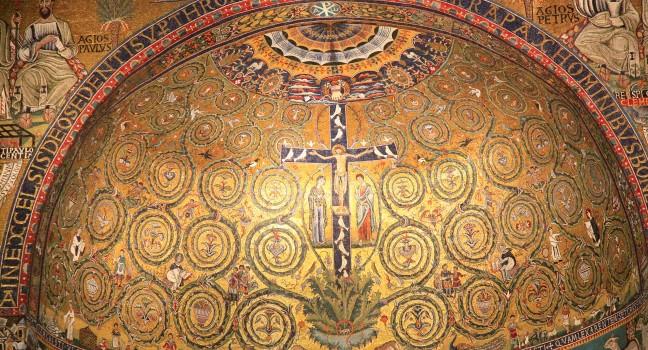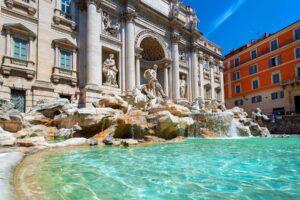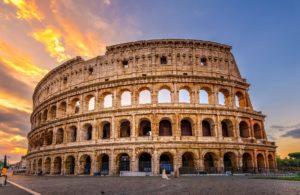Fodor's Expert Review San Clemente

One of the most impressive archaeological sites in Rome, San Clemente is a historical triple-decker. A 12th-century church was built on top of a 4th-century church, which had been built over a 2nd-century pagan temple to the god Mithras and 1st-century Roman apartments. The layers were uncovered in 1857, when a curious prior, Friar Joseph Mullooly, started excavations beneath the present basilica. Today, you can descend to explore all three.
The upper church (at street level) is a gem in its own right. In the apse, a glittering 12th-century mosaic shows Jesus on a cross that turns into a living tree. Green acanthus leaves swirl and teem with small scenes of everyday life. Early Christian symbols, including doves, vines, and fish, decorate the 4th-century marble choir screens. In the left nave, the Castiglioni chapel holds frescoes painted around 1400 by the Florentine artist Masolino da Panicale (1383–1440), a key figure in the introduction of realism and one-point perspective... READ MORE
One of the most impressive archaeological sites in Rome, San Clemente is a historical triple-decker. A 12th-century church was built on top of a 4th-century church, which had been built over a 2nd-century pagan temple to the god Mithras and 1st-century Roman apartments. The layers were uncovered in 1857, when a curious prior, Friar Joseph Mullooly, started excavations beneath the present basilica. Today, you can descend to explore all three.
The upper church (at street level) is a gem in its own right. In the apse, a glittering 12th-century mosaic shows Jesus on a cross that turns into a living tree. Green acanthus leaves swirl and teem with small scenes of everyday life. Early Christian symbols, including doves, vines, and fish, decorate the 4th-century marble choir screens. In the left nave, the Castiglioni chapel holds frescoes painted around 1400 by the Florentine artist Masolino da Panicale (1383–1440), a key figure in the introduction of realism and one-point perspective into Renaissance painting. Note the large Crucifixion and scenes from the lives of saints Catherine, Ambrose, and Christopher, plus the Annunciation (over the entrance).
To the right of the sacristy (and bookshop), descend the stairs to the 4th-century church, used until 1084, when it was damaged beyond repair during a siege of the area by the Norman prince Robert Guiscard. Still intact are some vibrant 11th-century frescoes depicting stories from the life of St. Clement. Don't miss the last fresco on the left, in what used to be the central nave. It includes a particularly colorful quote—including "Go on, you sons of harlots, pull!"—that's not only unusual for a religious painting, but also one of the earliest examples of written vernacular Italian.
Descend an additional set of stairs to the Mithraeum, a shrine dedicated to the god Mithras. His cult spread from Persia and gained a foothold in Rome during the 2nd and 3rd centuries AD. Mithras was believed to have been born in a cave and was thus worshipped in cavernous, underground chambers, where initiates into the all-male cult would share a meal while reclining on stone couches, some visible here along with the altar block. Most such pagan shrines in Rome were destroyed by Christians, who often built churches over their remains, as happened here.
READ LESS








